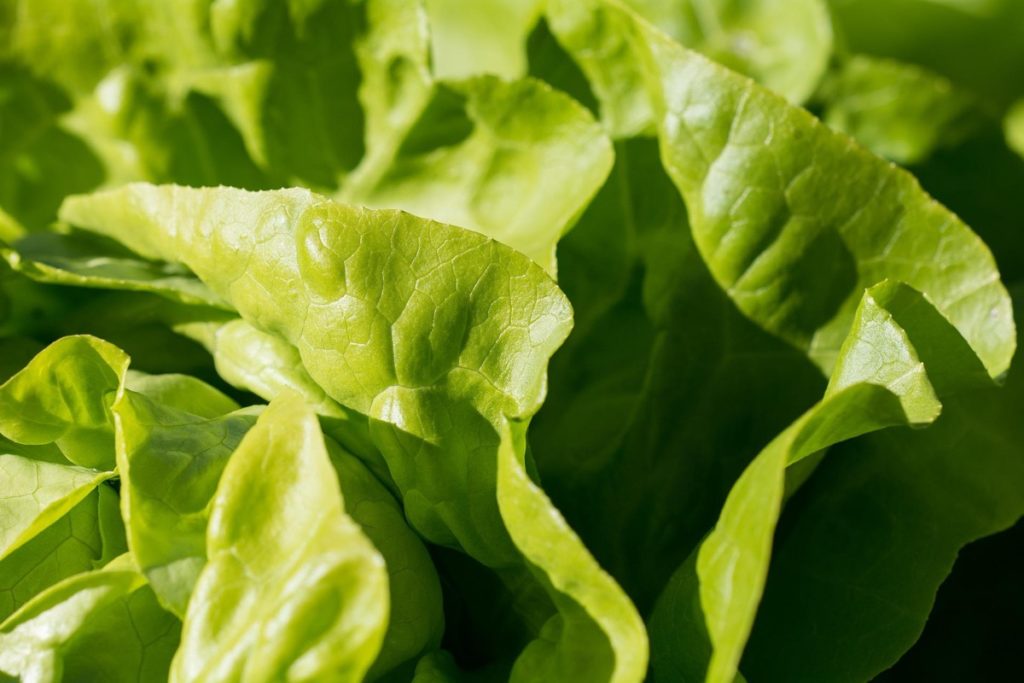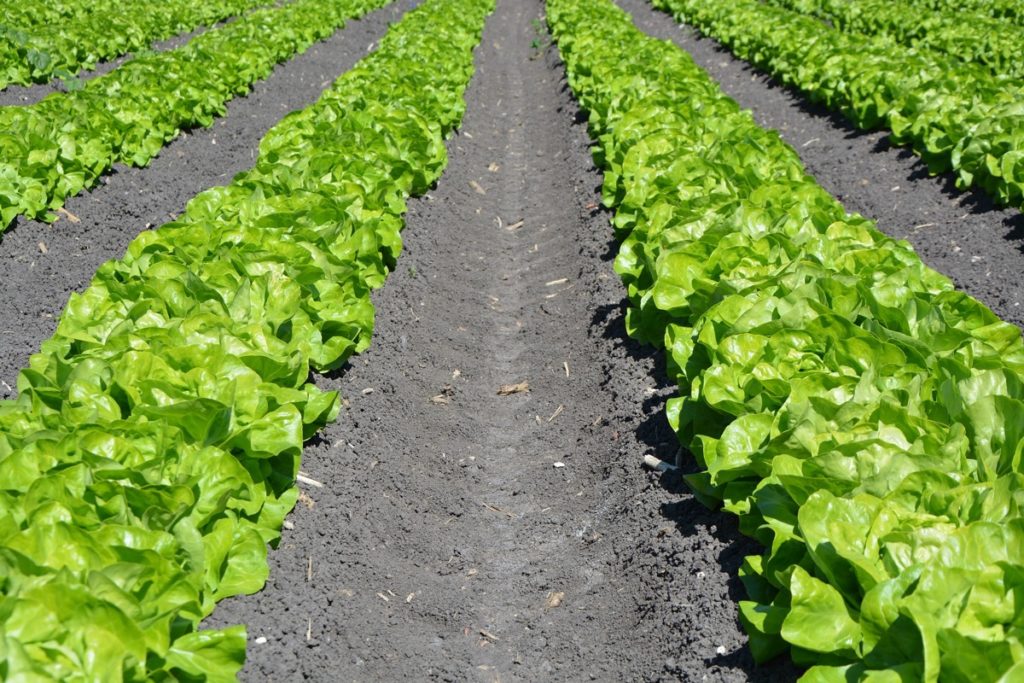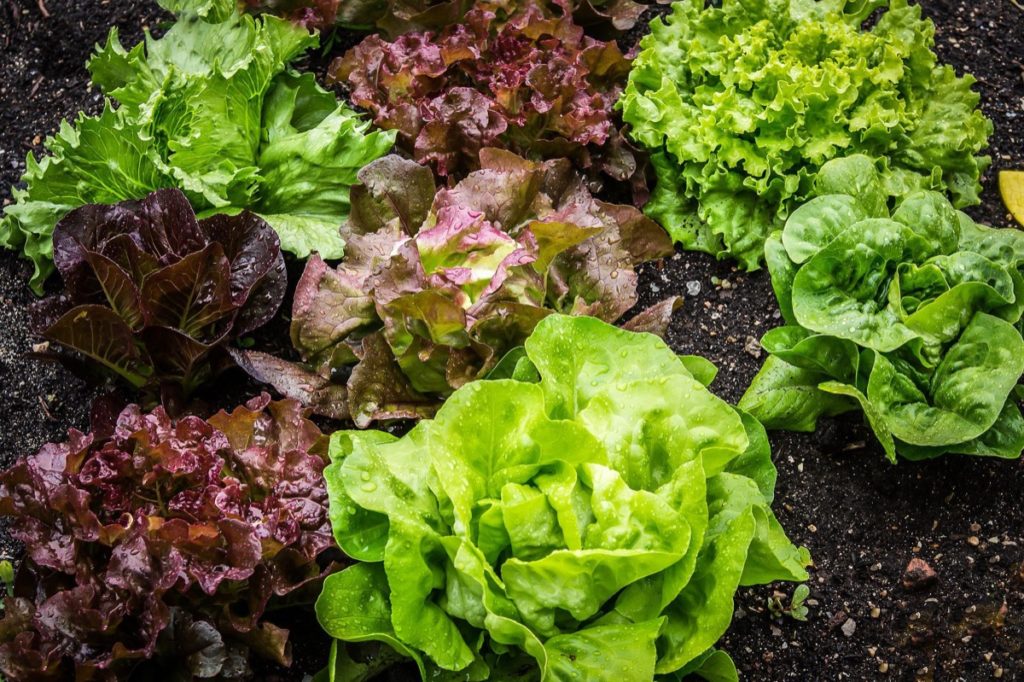Lettuce can be one of the easiest plants to grow in the house as it takes less time to sprout and the amount of it you can put in the ground. However, many people struggle to experience changes in color or structure once their plants grow or mature. Like most plants, Lettuce suffers from problems when conditions are right, and there are abundant soil nutrients.

The biggest problems that increase the Lettuce include growth, plant death, color changes, deep spots or stains, leggy-ness, bolting, and no head. These problems can be tackled using watering, transfer, chemical aids, thinning and strategic sowing. Let’s check out the 16 common Lettuce plant problems below.
16 common Lettuce plant problems
Your Lettuce plant has stopped growing
When your Lettuce plants stop growing, it lacks significant plant needs, such as nutritious soil, sunlight, and water. To grow properly, the soil you have applied your Lettuce to needs to be well balanced with essential nutrients like nitrogen, potassium, and boron.
Solution – If soil deficiency occurs, you will need to supplement with a specific fertilizer or bone meal. You don’t need to fertilize with every watering; add a little fertilizer every two weeks/month. The Lettuce plants also need plenty of sunlight, not enough to burn but not too little to grow. Please make sure you plant them in an area with moderate light to grow effectively. You should also ensure your plants have plenty of warmth; it’s complicated for the Lettuce plants to avoid freezing, so make sure your Lettuce is planted after the last frost.
The plants of the Lettuce have a tough time competing through frost and freezing. When the Lettuce is left to freeze, it will likely start to wilt after the weather heats up again. Therefore, lettuce needs to be watered frequently and should not be allowed to dry. Since Lettuce is mostly water, the plant needs more hydration than many other varieties of vegetables and herbs in your garden.
Lettuce plants are turning pink or red
While this problem usually occurs after harvesting, your Lettuce plants may start to become rusted colors when they are still growing.
Solution – It means that you have to immediately harvest the heads of the Lettuce to avoid worsening the problem. This pinkening is caused by oxidation. Oxidation occurs when soft compounds in foods are exposed to oxygen, causing chemical reactions that change the color of the vegetable. Other foods that experience oxidation are Apples, Bananas, Potatoes, and Pears.
Bolting
Lettuce grows a large flower head (or bolt for seed), usually caused by heat stress.
Solution – Make sure you regularly water the soil around the Lettuce base. If you live in a very sunny area, provide shade. Make sure the soil contains enough nutrients. Once the Lettuce plants show signs of poor growth, you can use liquid fertilizer, but remember that you should not take water from overhead.
You may have applied the Lettuce at the wrong time of the year. Depending on the temperature in your area, plants at the end of spring or late summer. Thus, you avoid the hottest part of the season when the plants are young. Once the Lettuce starts struggling initially, extending the rest of the season seems complicated.
Leggy Lettuce
Solution – If the Lettuce is in the garden and is leggy, it’s probably because the plants are getting too sunny or hot. Provide them with a little more shade in the form of shade clothes. If the Lettuce is already in the shade, they probably need more sun. Be careful not to plant them in the same place next season.
Leaves are colorless, scorched, or wilted
There are several reasons for the Lettuce appearing less than desirable. Too much sun is the reason for the number one of the scorched leaves. Nevertheless, sometimes Lettuce leaves turn to an ugly brown variety that makes you question if they are safe to eat. Leaf crusting and browning can also be caused by bacterial rot. It results in poor air circulation in rows planted very close to each other.
Solution – When planting the Lettuce, be sure to respect the need to place individual plants and ensure that it is well-watered during the growing season.
Brown tips and sunburn leaves
If you usually experience warm summers, and you’ll know this from experience, the Lettuce needs a little bit of shade when temperatures rise.
Solution – Brown tips on the Lettuce can prevent sowing your seed in the shadow of other long crops. You can also use a shade cover if necessary.
In case you missed it: Top 14 Lettuce Companion Plants, Planting Guide

Lettuce leaves taste bitter
Most salad greens turn bitter when the day temperature rises above 21°C. Remember that Lettuce is a cool-weather vegetable, and you won’t try to grow it again in the summer heat. Another reason is that the Lettuce becomes bitter, much less water/moisture.
Solution – If the edges turn brown, it can signify that your Lettuce is thirsty. If you find out that your Lettuce is still bitter despite your best efforts to keep it cool and moist, the lack of nutrients in the soil may be the answer. Since the Lettuce grows rapidly, it needs nutrients. But it’s all about balance because too much nitrogen can also bitter the leaves.
Damping-off
It’s a problem for many plants; it’s mostly just a problem with the Lettuce. At first, your seedlings look healthy, then they wilt and fall.
Solution – Do not plant your Lettuce in the cold, overly moist soil. Instead, ensure your soil is well-drained, and don’t give too much water.
Diseases
Bacterial leaf spot
If you find out that brown or black spots develop on your Lettuce leaves and then die or struggle, you probably have the bacterial leaf spot. Bacteria cause it in the soil that has made its way into the Lettuce through water splashes, inappropriate plantation techniques (ensure proper placement of your plants), or gross misfortune.
Solution – There is no cure once the plant is affected, so remove the affected leaves or the entire plant to avoid further spreading. Try not to take water from the top of the head and crowd the Lettuce while planting.
Fusarium wilt
The yellowing of the Lettuce can be due to many other things like insufficient nutrients, too much or little water in the soil, and fungus. It’s notoriously difficult to control the Lettuce once this fungus appears, but there are things you can do.
Solution – First, carefully remove any affected leaves so that the fungus does not spread. Remove the whole thing if the majority of the Lettuce is affected. Then, remove some small in the middle of the large to allow more airflow and prevent plants from touching each other. Your last option is to use friendly fungicides.
Downy mildew
You can see the growing Downy mildew on your Lettuce leaves in a cool environment or high daytime humidity and low overnight temperature areas. The Lettuce, which is affected by a long period of cold, wet temperatures, is highly susceptible to infections like this fungal. Symptoms of the disease include yellow or brown spots on leaves, wilt, and the growth of the fluffy mold, usually under the leaves.
Solution – Once the symptoms of the disease are noticed, it is better to remove the infected leaves and destroy them. The best treatment is prevention. Plan your garden space to allow proper distance between plants, as it can help prevent more than one type of disease. Plants that do not have enough capacity can quickly transmit disease and attack. Check your seed packet for distance information.
In case you missed it: Lettuce Planting Questions and Answers (FAQs)

Avoid overwatering during cold temperatures and do not allow water to sit on leaf surfaces. Make sure loose, low-hanging leaves are not laying against the soil below or are not firmly pressed against other plants. Increase the air circulation by using a fan or blower, if possible, to keep the plant surface dry and help them dry faster.
Pests
Aphids
There are numerous species of aphids, which means they can affect gardens worldwide. While it seems that such a small insect certainly could not have been used enough to kill the plant, the concept is wrong, as the aphids should use a large amount of fluid to be persecuted, and they usually come in groups.
Since they pierce the plant’s surface, they can cause the spread of the disease, which can be even more harmful than fluid sown during food. In addition, they target small plants, sometimes using plant fluids to cause stunts, withered, or even death. You will often see the curled leaves and stunt growth when they are present.
Solution – If you observe an aphid infection, you can sometimes deal with it by dropping insects using a strong explosion of water from the garden’s hose. Instead, horticulture oil or neem oil can be sprinkled on plants, suppressing insects. In addition, you can introduce local species of predatory insects to the garden, such as prayer manties, ladybugs, or braconid wasps, which will feed the aphids and many other common insects.
Beetles
Flea beetles and darkling beetles are common and can damage the Lettuce and other plants in the garden. These beetles are usually produced from soil and live in soil or garden debris and brush in the growing season. Another problem with the pests living in the soil is that even after the growing season arrives and goes, they can stick around during the winter and return to full strength disappointingly next season.
Although they usually don’t just chew and kill mature plants by chewing leaves, a reasonably bad attack can significantly impact plant health and adversely affect your crop.
Solution – To deal with the beetle attack, taking action before giving insects a chance to become a real problem works best. For example, you can introduce nematodes beneficial for eating eggs, and larvae can be introduced into the soil before they emerge. Planting Basil or catnip can repel flea beetles from some sensitive plants. There may be suitable preventive measures to use the land and row cover even when planting.
In case you missed it: Growing Lettuce Indoors – A Planting Guide For Beginners

Caterpillars
There are several different caterpillars that you can get to feed on your crop, eating leaves to the extent that plants can’t survive. One of the most common caterpillars to affect the Lettuce is the cabbage worm. This velvety green caterpillar usually hides by lying flat inside the spines of the leaves of vegetable leaves. However, it is also known to affect Lettuce, Spinach, and other garden plants.
Cabbage loopers are soft but not as fuzzy as cabbage worms. Both moths and butterfly seedlings breed several times every year, so it is essential to be vigilant about their weak plants in the growing season. Mesh or row cover can be a helpful prevention measure in restricting access to adults laying eggs.
Solution – Fighting a caterpillar with chemicals can be particularly harmful because they can continuously lay eggs in the growing season, potentially increasing the amount you need to apply. Use very few chemicals, and follow the package instructions closely. It is often easier for the home gardener and less environmentally harmful to pick them up. If you keep looking at larvae, consider introducing beneficial predatory insects such as prayer manties, ladybugs, or lacewings as they hunt larvae when they hatch.
Slugs and snails
It is easy to spot signs of attack by slugs and snails on the Lettuce. Look for rubbed holes in leaves and chewing parts on the margins of leaves. Slugs and snails are the most active when cold, and moist.
Solution – You can try several ways when planning an attack. First and foremost, clean the debris and hide the spaces outside the garden. Removing dark, cool spaces to hide and lay eggs will follow some of them. A shallow plate full of beer near affected plants can attract slugs away and drown them. Both snails and slugs are burnt with salt, and spraying a small amount around the edges of planting beds can be enough to prevent them from crossing.
In case you missed it: Growing Organic Lettuce – A Full Guide

Fungus gnats
The larvae will attack the roots of the seedlings.
Solution – Controlling the fungus gnats can be a challenge, as larvae are produced from soil, and generally, those plants choose sensitive seedlings. One way of controlling is to allow the soil to dry completely and break it with a spoon or spade, making as much of it as it can in the air. But obviously, this will need to be done before planting or after the seedlings die or have a transplant. Another way many people swear is to sprinkle a generous amount of ground- powdered cinnamon, smothering any present larvae and preventing adults from landing to lay eggs.
- Where to Place Indoor Plants in Your Home
- How to Grow Tomatoes Organically at Home: A Comprehensive Guide
- Organic Gardening on a Budget: Low-Cost Methods and Materials
- Gongura Seed Germination and Planting Methods
- Cabbage Seed Germination and Selection
- Broccoli Seed Germination and Selection
- Asparagus Seed Germination and Variety Selection
- Seasonal Flower Gardening: Best Practices for Spring, Summer, Fall, and Winter
- How to Grow Hibiscus from Flower
- Plantation Ideas for Home Decoration: A Beginners Guide
- Flower Garden Designs and Layouts for Beginners
- Planting and Spacing Techniques in Papaya: A Beginner’s Guide
- Growing Gold: Essential Techniques for Planting Pineapples
- How to Make Kalanchoe Plant Bushy: Home Remedies and Solutions
- 11 Reasons Why Your Gardenia is Not Blooming: Home Remedies and Solutions
- Eco Elegance: The Guide to Designing a Drought-Tolerant Landscape
- Gardening on a Slope: Strategies for Hillside Landscaping
- Nourish and Flourish: Top Organic Mulches for Thriving House Plants
- Everything You Want to Know about Indian Mogra Flower: Discover Uses and Growing
- Green Thumb Success: Expert Tips for Cultivating Greenhouse Pumpkins All Year Round
- Maximize Growth & Flavor: The Ultimate Guide to Companion Planting in Herb Gardens
- How to Control Rhododendron Problems Naturally: Home Remedies and Organic Ways to Fix Them
- Natural Magic: The Remarkable Benefits of Cinnamon for Plants
- Best Steps to Revive Dying Tulip with Natural and Organic Treatment
- 10 Reasons Why Your Angel Trumpet is Not Blooming: Remedies and Treatment
- How to Fix Periwinkle Leaf and Flower-Related Problems: Natural Remedies and Solutions
- How to Fix Zinnias Leaf and Flower Problems: Discover Natural and Home Remedies
- Organic Steps to Induce Lemon Tree Flowers: A Comprehensive Guide
- Bloom Booster: Crafting the Perfect Homemade Bougainvillea Fertilizer
- Optimizing Growth: A Guide to Applying NPK Fertilizer for Potted Plants
- 10 Best Homemade Fertilizers for Rubber Plant: DIY Recipes and Application Method
- How to Boost Female Pumpkin Flowers: Effective Steps for More Flowers and High Yields
- Transform Your Indoor Garden: Top Benefits of Pink Salt for Houseplants
- 10 Best Homemade Fertilizers for Peacock Plants (Calathea): Easy DIY Guide
- Unlock Blooms: 9 Reasons Why Your Potted Chrysanthemum is Not Blooming
- 8 Reasons Why Your Potted Hibiscus is Not Blooming: Fix it with Simple Solutions